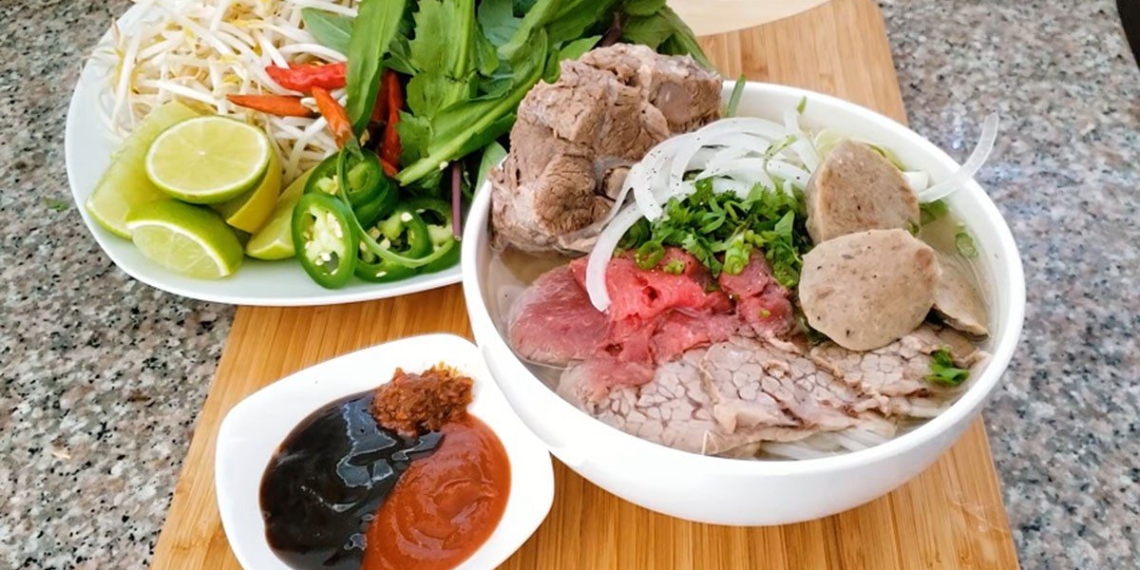This pho dish is as delicious as what you would get at a restaurant, and the cooking method is incredibly simple, quick, and convenient. Have you tried it yet? TasteVN will reveal the recipe for this dish right below. Now, let’s get cooking and prepare beef pho and chicken pho using a multifunctional electric pressure cooker!
1. Beef Pho with Pressure Cooker
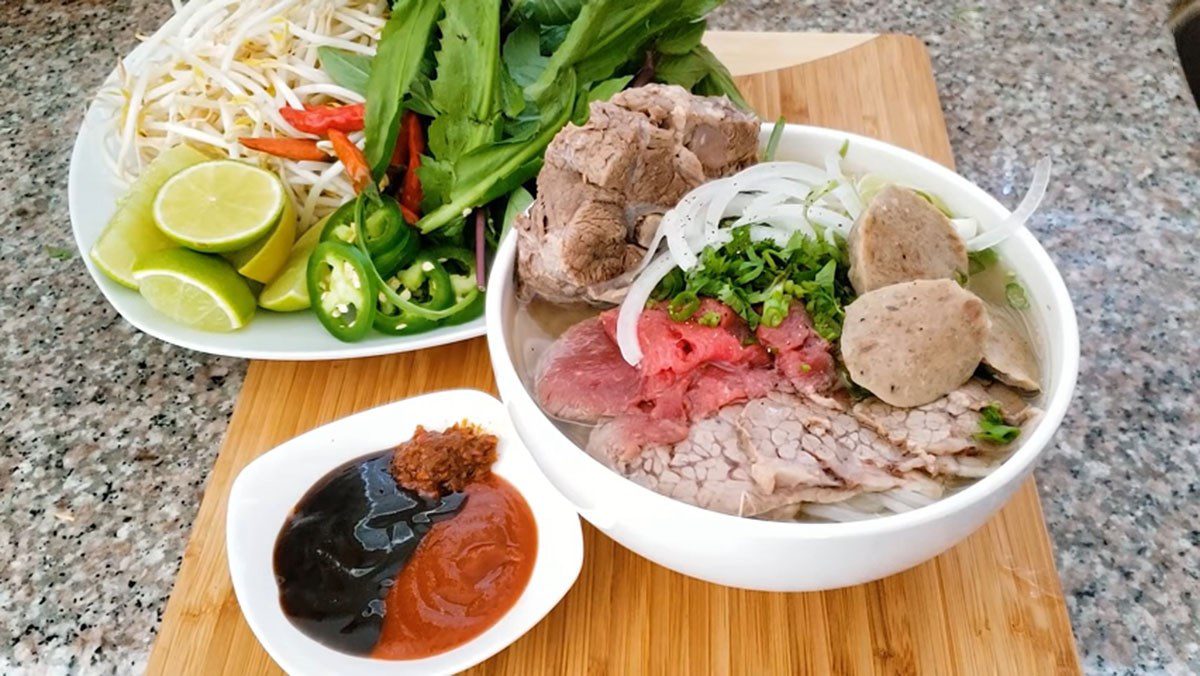
-
Preparation
30 minutes
-
Cooking time
3 hours 30 minutes
-
Difficulty
Medium
Ingredients for Beef Pho with Pressure Cooker Serves 10 people
Beef bones 2.5 kg (shin bones or tail bones) Beef neck bones 1.5 kg Cooked beef 1 kg (brisket) Beef balls and rare beef if desired a little Fresh pho noodles 2 kg Pho spices 2 packets (small packets) Dry pho cooking spices 1 packet (43g including cinnamon/star anise and some other seeds) Rock sugar 50 g Chicken soup powder 3 tablespoons Ginger 170 g (1 medium piece) Onion 2 bulbs Whole pepper 3 teaspoons Green onion tops/ scallions/ cilantro a little Herbs to serve with pho a little Salt/ seasoning powder a little
How to choose fresh ingredients
How to choose fresh beef bones
- You should buy beef shank or oxtail bones to make a sweeter and tastier broth than other bone parts.
- Choose bones that are still fresh, have a red color, and feel heavy when picked up.
- Avoid buying frozen bones of unclear origin to protect your health.
- Do not buy bones that are bright white or pale in color, and feel light when held, as they are old bones which do not make a good broth and can easily smell bad.
How to choose fresh beef
- Fresh beef will have a dark red color, uniformly colored, and the surface of the cut will be shiny. The piece of meat should have a characteristic fresh meat smell, without any strange odor.
- You should choose meat that feels dry to the touch, without a sticky feeling. Try pressing on the piece of meat; if it’s fresh, it will have elasticity and will not dent when pressed.
- Do not buy meat that feels wet to the touch, as this indicates the beef has been soaked in water. For pho, you should choose beef tenderloin or brisket as they will be softer and sweeter when eaten.
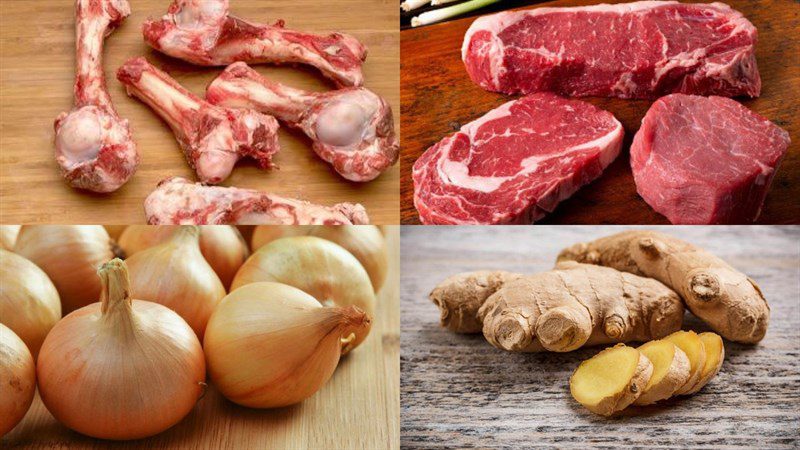
Tools needed
Multifunctional pressure cooker, knife, spoon, bowl, cutting board,…
How to Cook Beef Pho with a Pressure Cooker
-
Prepare the Bones and Beef
Beef bones and meat, after washing, should be soaked in salt and vinegar for about 5 minutes, then rinsed with clean water and blanched.
Put the bones and meat into the pot, add 1 liter of water, 1 teaspoon of salt, cover the lid, and bring to a boil. Boil the bones and meat for about 5 – 7 minutes, then remove them, and rinse under running water once more to ensure they are clean.
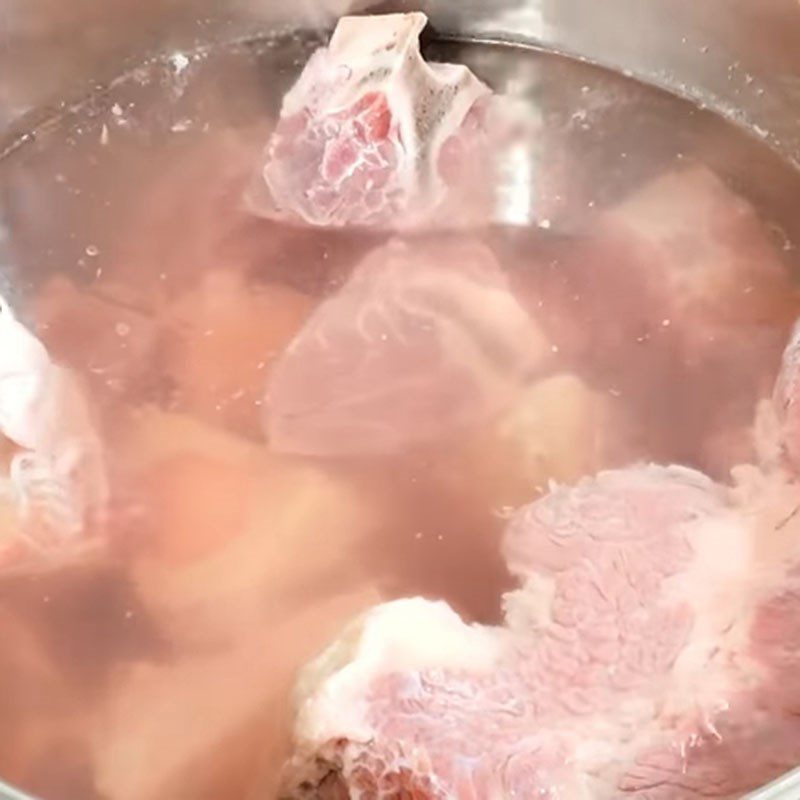
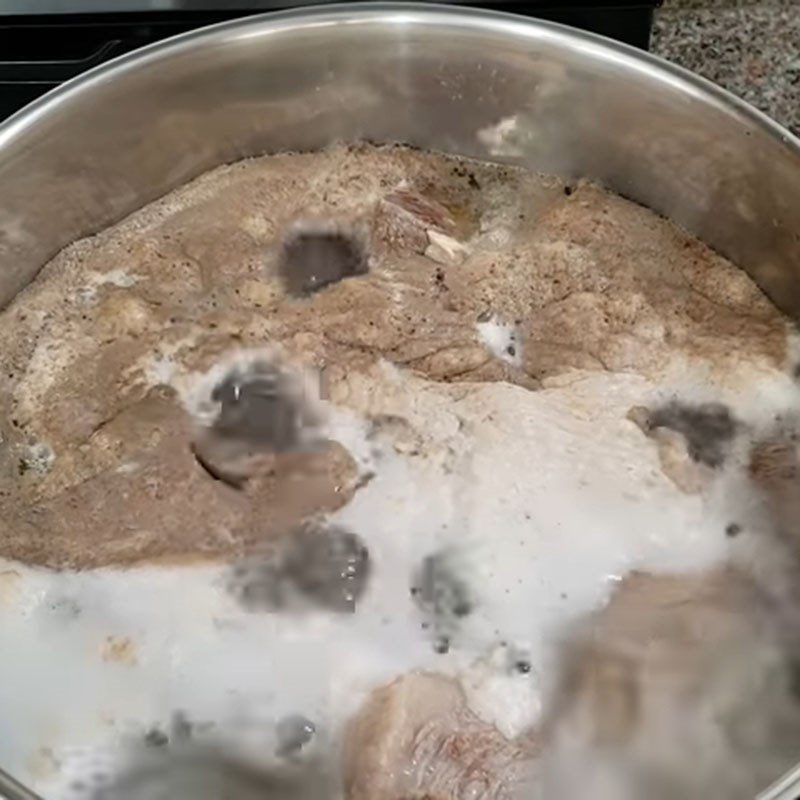
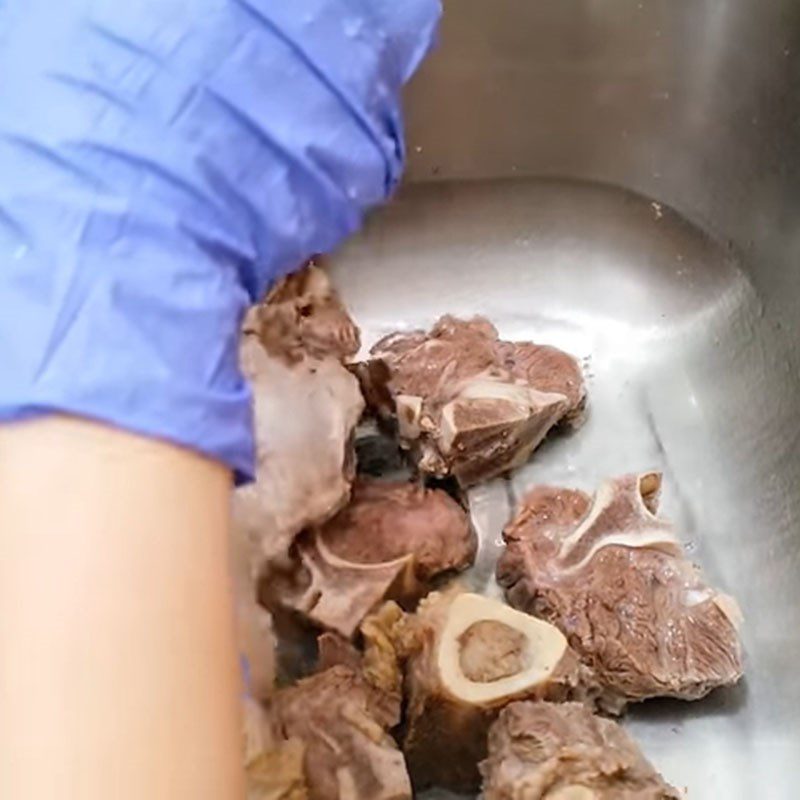

-
Roast the Onions and Ginger
Peel 2 onions and place them on the stove to roast along with 1/2 a ginger root. Once the onions and ginger are cooked and fragrant, scrape off the burnt layers on the outside and wash them clean.
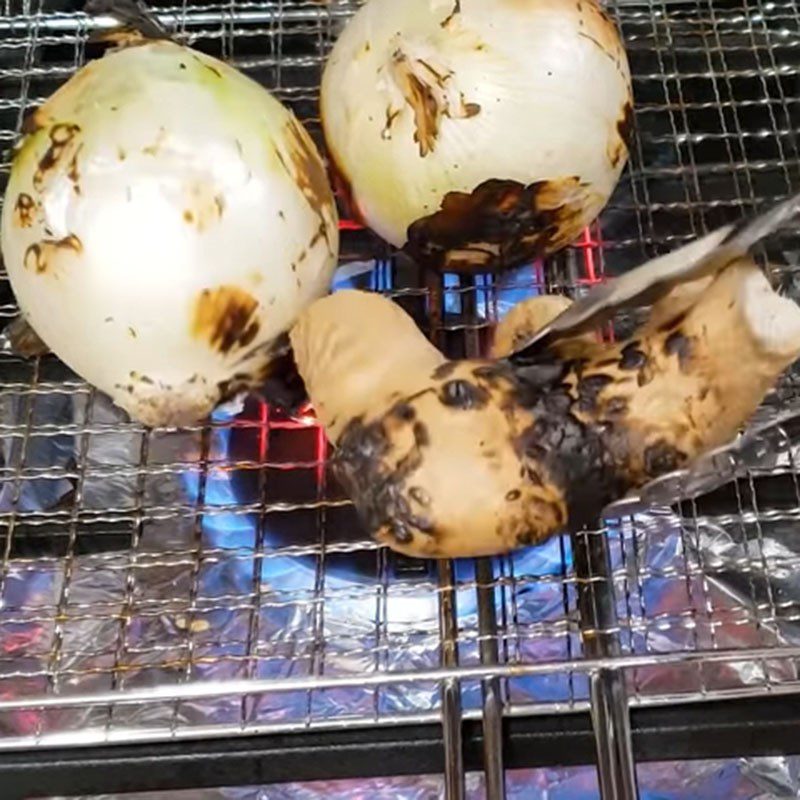
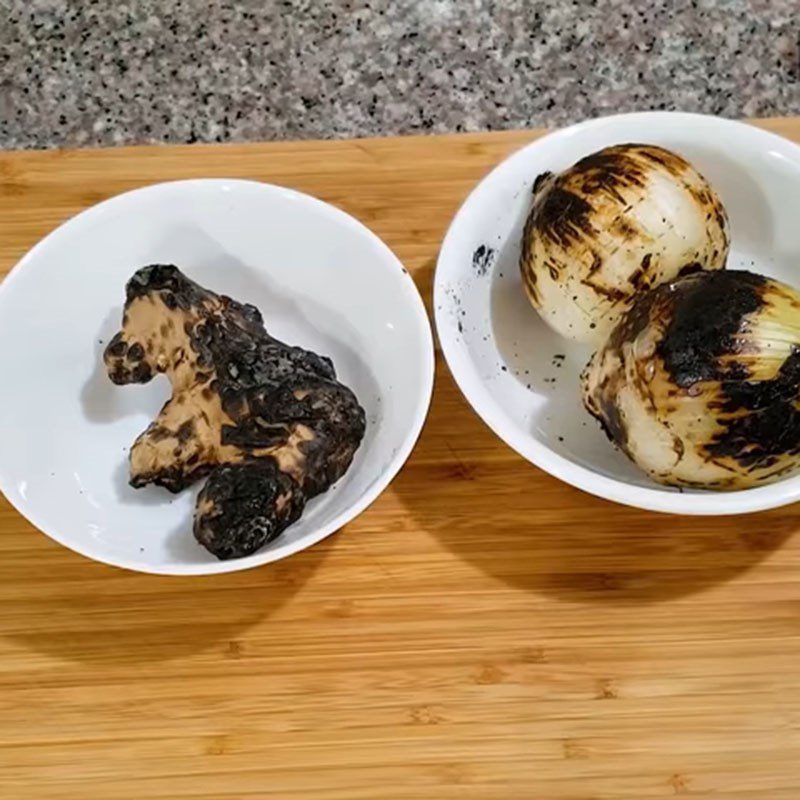

-
Simmering bones
Put the beef bones (do not include the neck bones) that have been prepped into the pressure cooker, pour in enough water to cover the bones (about 2/3 of the pot), add 1 teaspoon of whole pepper and 1 tablespoon of salt to the pot.
Cover the lid, lock the valve, press the “Manual” button, and set the simmering time to 60 minutes. After simmering, let the bones sit for about 6 – 8 hours to extract all the sweet juices from the beef bones.
Strain the broth through a sieve to obtain clear broth. After filtering the broth, separate all the meat and tendons clinging to the beef bones, set them aside, and take the bones for a second simmer.
Put the separated beef bones, neck bones, and cooked meat back into the pot, pour in enough water to cover 2/3 of the pressure cooker, add 1 teaspoon of whole pepper, 1 tablespoon of seasoning, and simmer for 30 minutes on the old setting. After cooking, let it sit for another 30 minutes.
Continue to strain the broth through a sieve for the second time, remove excess fat from the broth to reduce greasiness.


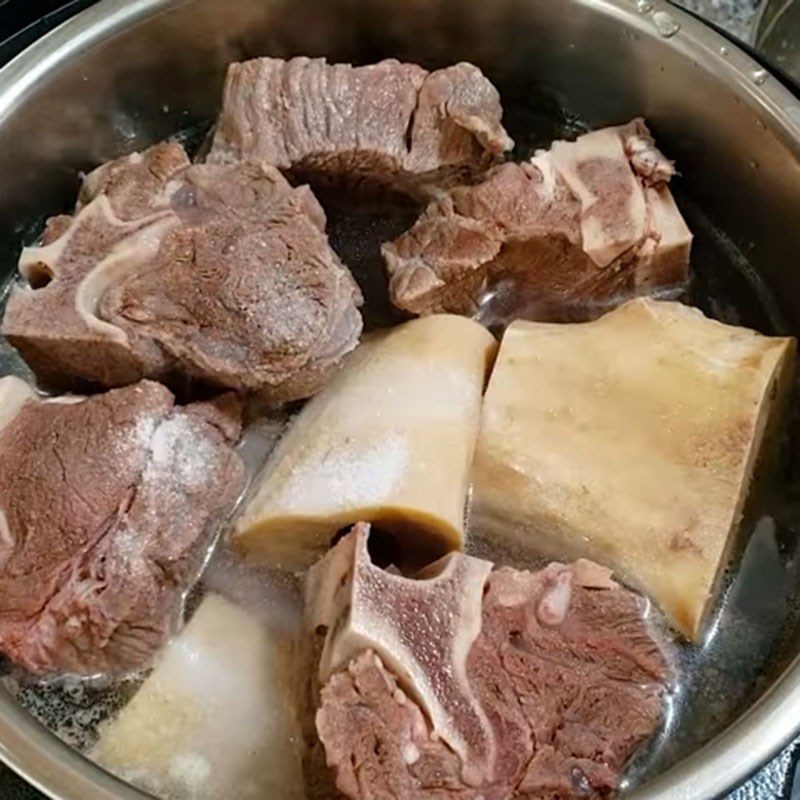
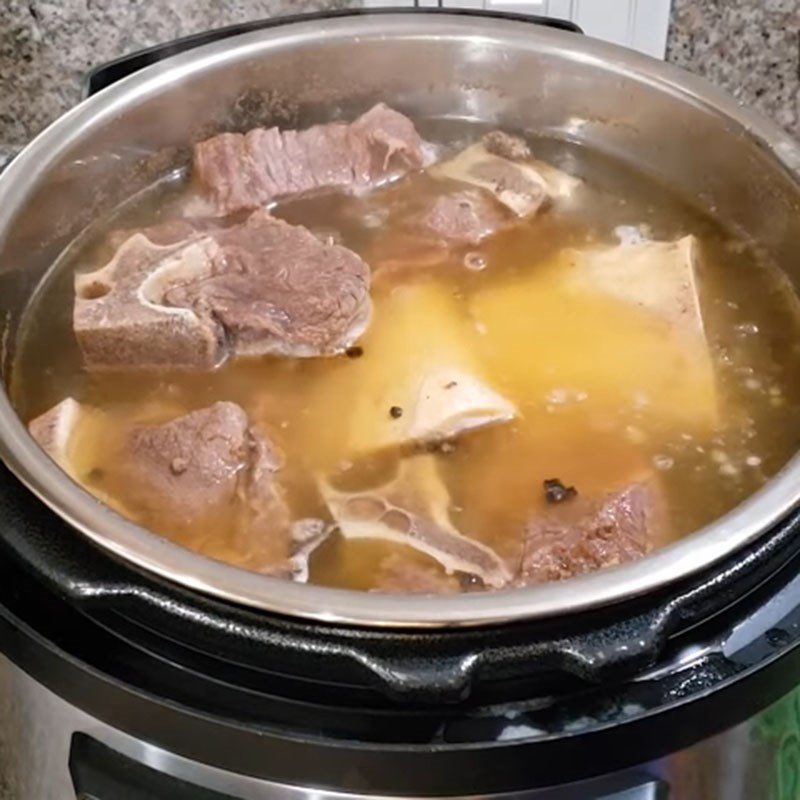
-
Cooking the broth
In the pho seasoning packet, take out the cinnamon, star anise, and cardamom and roast them in a pan over low heat until fragrant, then add the remaining ingredients and roast for another 3 minutes before turning off the heat. Place them in a filter bag to use later for making the broth.
Pour the broth ingredients into a large pot, add cold water until you have enough for 12 liters, then add the bones (bones that have been cleaned of meat and tendons), roasted onion and ginger, and green onion tops, and bring the broth to a boil.
For a rich flavor, add 3 tablespoons of chicken soup powder, 1 teaspoon of whole pepper, 2 packets of pho seasoning, and the roasted spice bag, and simmer for 80 – 90 minutes over medium heat.
Before turning off the heat, taste and adjust the seasoning to your family’s preference, and add beef balls if desired.
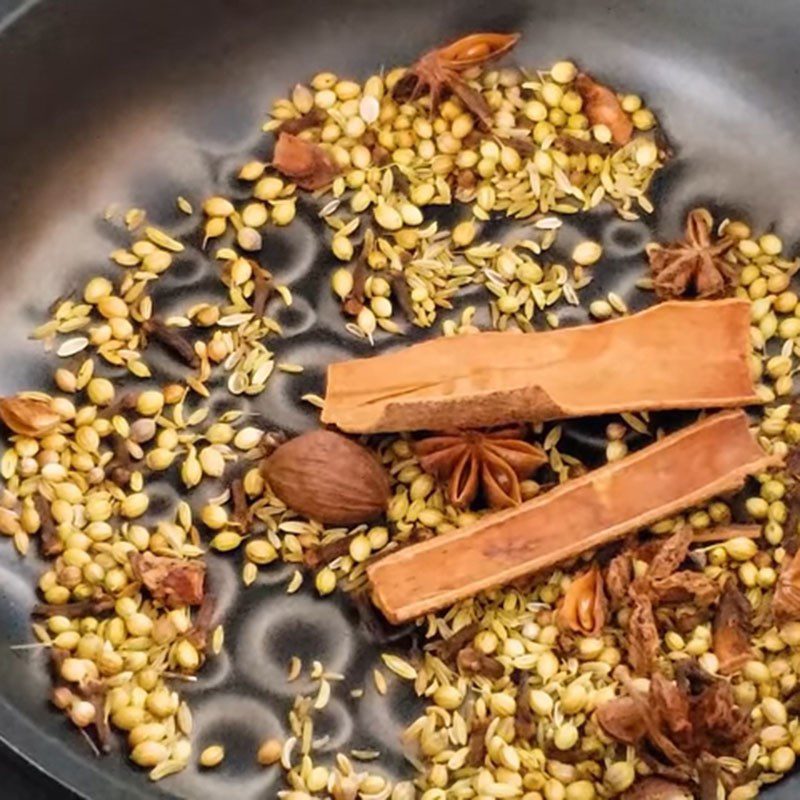
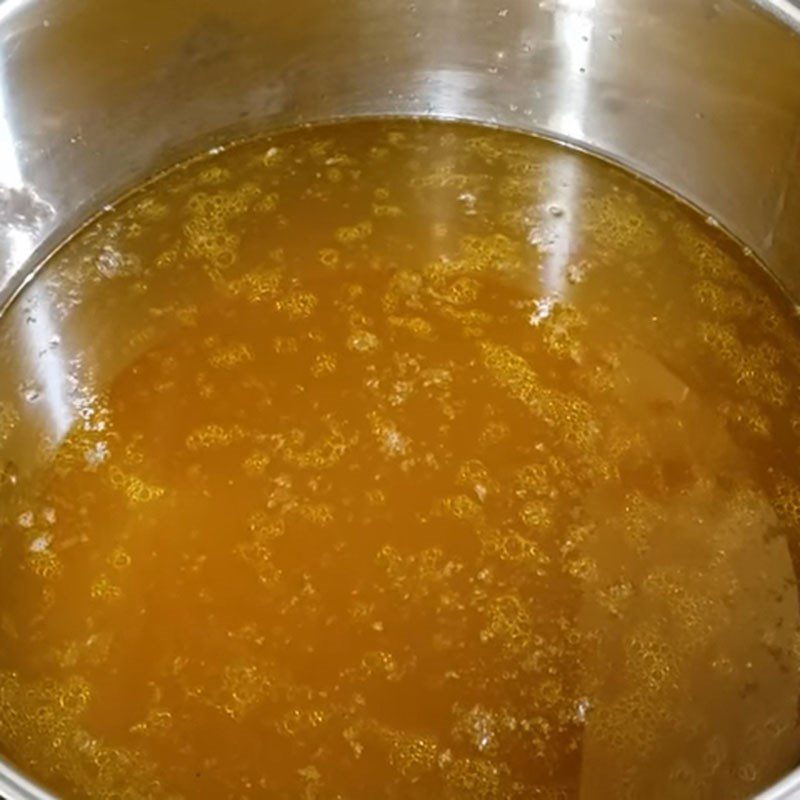
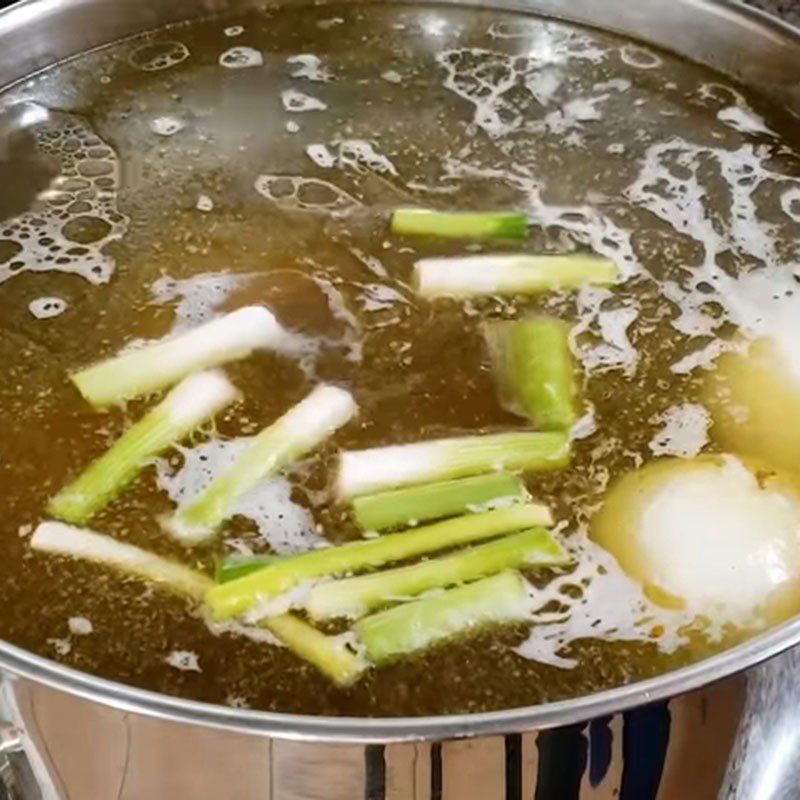
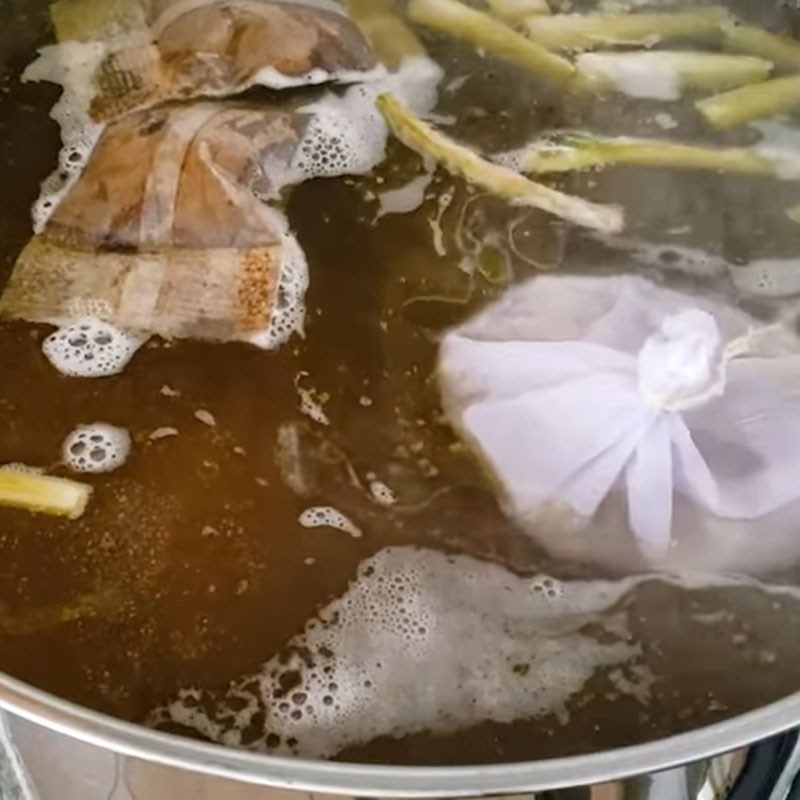
-
Completion
While cooking the broth, prepare some ingredients to accompany the pho.
Trim the green onion tops into flower shapes for decoration, and finely chop the green onion leaves along with a bit of cilantro, and slice the beef brisket into bite-sized pieces. You can also cut some fresh beef to make rare meat to eat along with it.
Prepare a pot of boiling water and blanch the fresh pho noodles for about 5 seconds, then remove.
Place the pho noodles into a bowl with bean sprouts ready, add beef, tendons, rare beef, pour the broth on top, and add green onions and cilantro for fragrance and aesthetics, and then you can enjoy it.
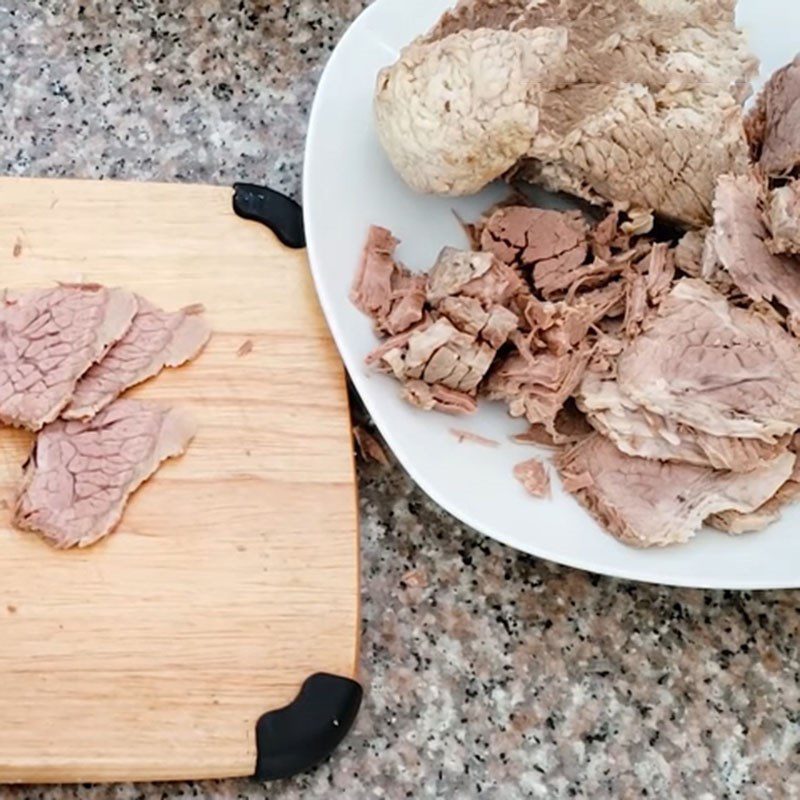
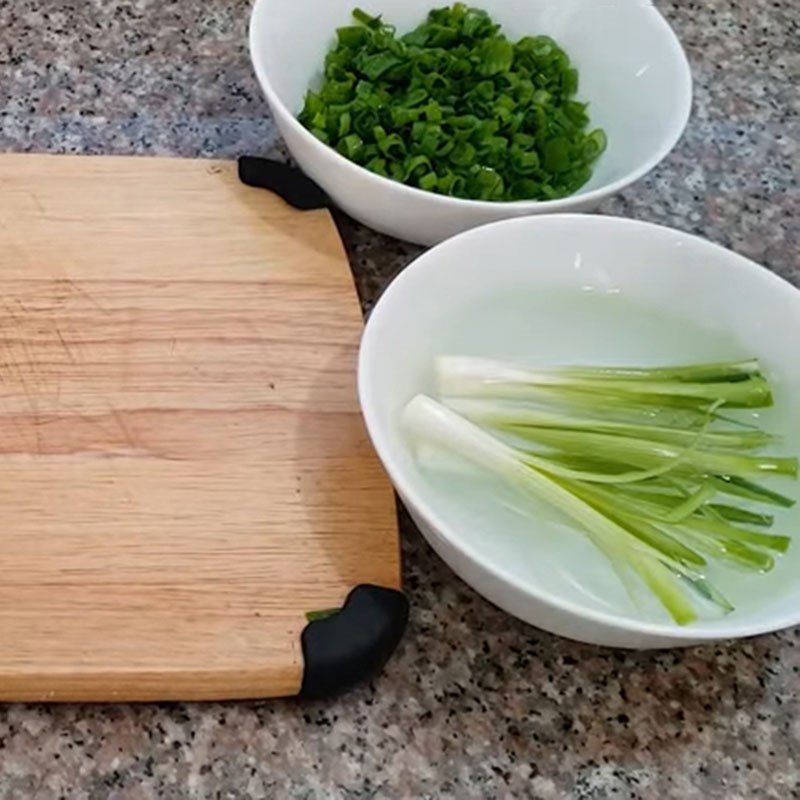
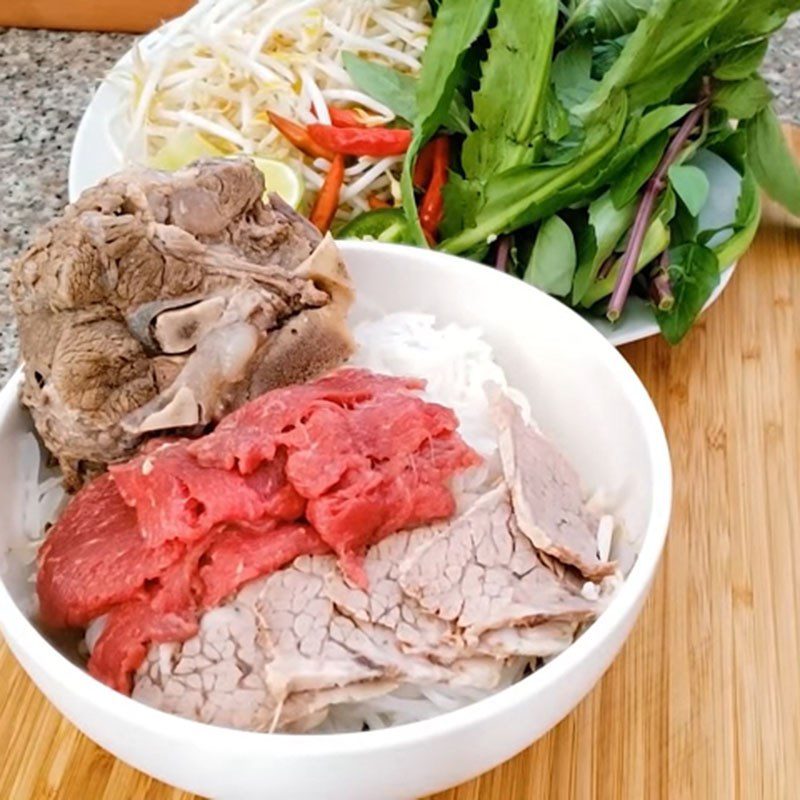
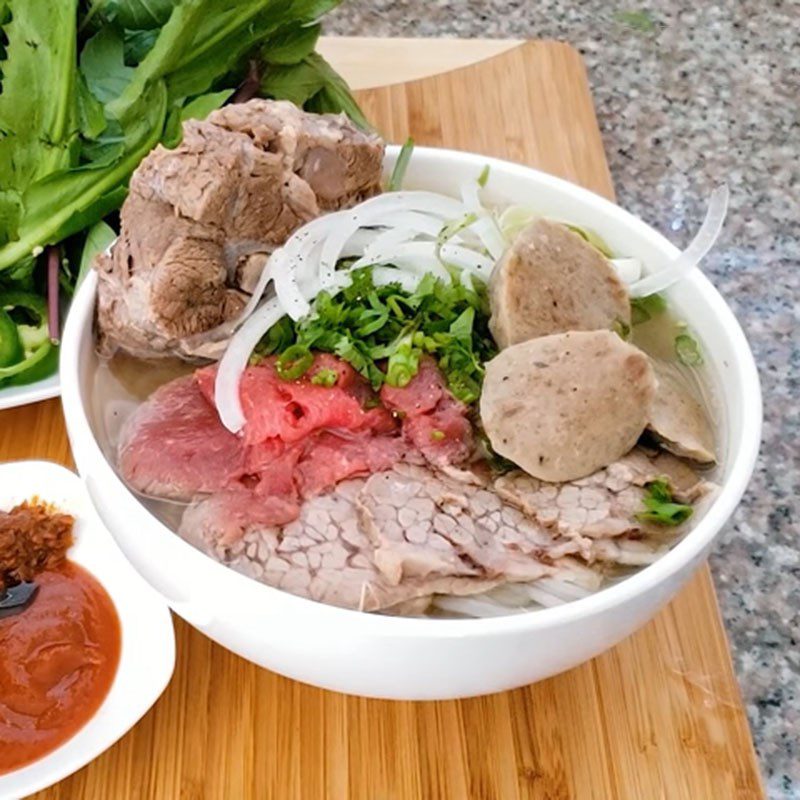
-
Final Product
Now you have a delicious bowl of beef pho ready to impress your friends and family. The broth is clear, fragrant with the distinctive aroma of pho, sweet from simmered bones, and the beef is tender, melting in your mouth; you definitely must try it.
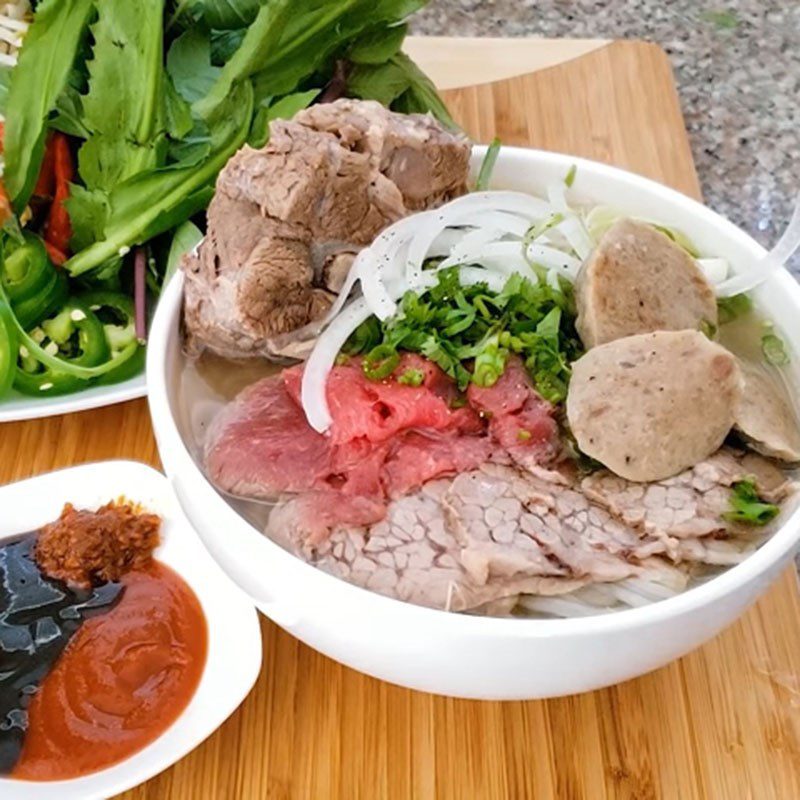
2. Chicken Pho using Pressure Cooker
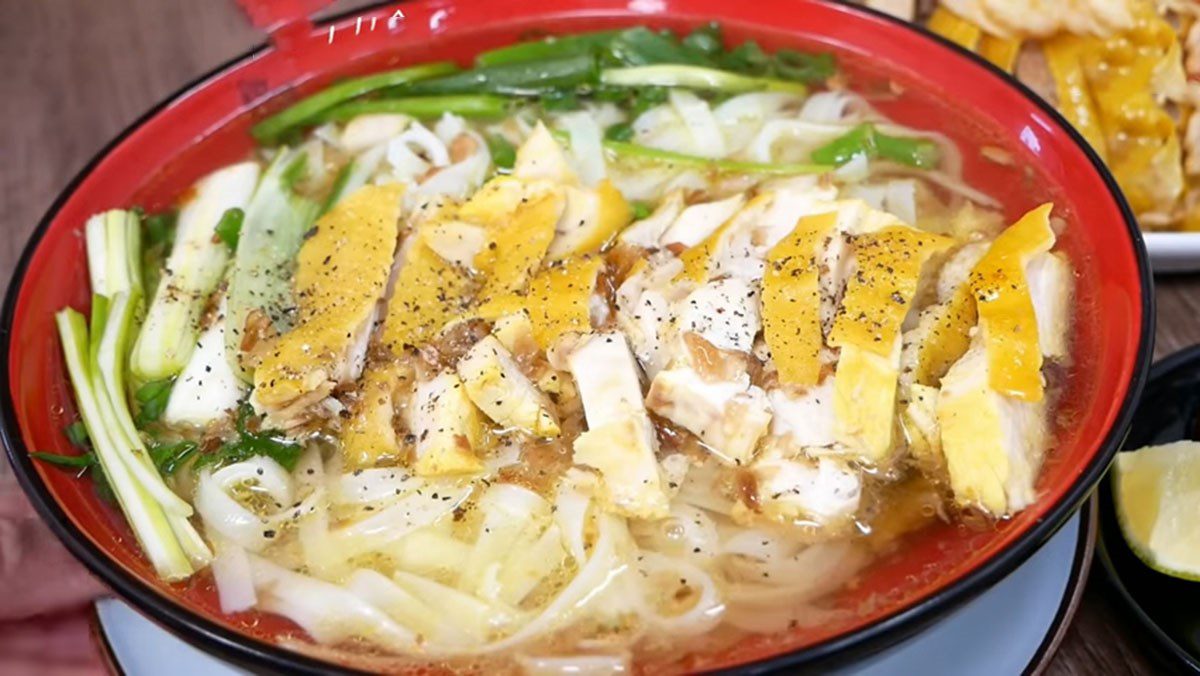
-
Preparation
20 minutes
-
Cooking
1 hour 30 minutes
-
Difficulty
Medium
Ingredients for Chicken Pho using a pressure cooker Serves 10 people
Local chicken 1 bird (about 1.5 – 1.6kg) Chicken offal 300 gr (chicken heart) Fresh pho noodles 2.5 kg Broth 1.5 liters (bone broth) Onion 300 gr (about 2/3 of a large onion) Coriander seeds 1 tablespoon (coriander) Shallots 50 gr Ginger 1 piece (small piece about 20gr) Peppercorns 1 teaspoon Star anise 3 pieces (star flower) Green onion tops 5 pieces Coriander roots 3 pieces Cooking oil 2 tablespoons Turmeric powder 1 teaspoon Rock sugar 20 gr Bean sprouts and various herbs for garnish a little (coriander/ cilantro/ Vietnamese coriander…) Salt/ monosodium glutamate/ ground pepper a little
How to choose fresh and delicious chicken
- For this dish, you should choose to buy half a chicken that is lean, with meat that is not greasy; the best is to buy native chicken or free-range chicken.
- You should choose a chicken with a compact, firm body, and a nice breast because that indicates it is a young chicken that will be tender and delicious when cooked.
- Fresh chicken meat will have a rosy, bright color. When you lightly touch the piece of meat, you will feel the high elasticity.
- Good chicken has thin, smooth skin, light yellow color; some areas like the breast, wings, and back will have a darker yellow color.
- Do not choose chicken that is white or dark black; fully yellow skin or chicken with bruises or blood clots on the skin.
- Fresh and delicious chicken will have a characteristic aroma. Do not choose chicken that has a foul or strange smell.
- When buying, press your hand into the meat suspected of being water-injected (thigh, breast, …). If you find the meat mushy, soft or lacking elasticity, then do not buy it.
- You can buy packaged bone broth at supermarkets and stores or you can make your own broth at home according to TasteVN’s recipe.
You can buy packaged bone broth at supermarkets or order it on e-commerce sites. You can also cook broth at home according to TasteVN’s recipe!
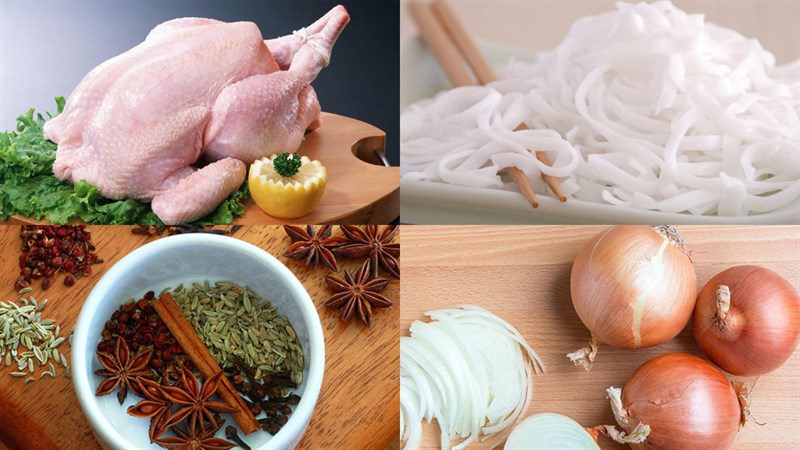
Tools needed
Multi-functional pressure cooker, knife, spoon, bowl, cutting board,…
How to make Chicken Pho using a pressure cooker
-
Prepare the chicken
After buying the chicken, clean the feathers and internal organs, prepare about 1 liter of boiling water to pour over the chicken, then take it out and let it drain.
Peel the shallots and onion, place the shallots, half of the onion, and ginger into an air fryer, set the temperature at 190 degrees Celsius and roast for 3 minutes. Alternatively, you can roast them on a regular stove until the shallots and ginger are fragrant, then scrape off the burnt outer layer.
How to clean the chicken to reduce odor:- You should clean the feathers thoroughly, remove the oily gland from the tail, and use a mixture of salt and vinegar to wash the chicken.
- After cleaning the feathers, you can soak the chicken in water for about 20 minutes.
- You can also clean it by using salt, pepper, crushed ginger, and a little white wine for about 30 minutes, then rinse with cold water.
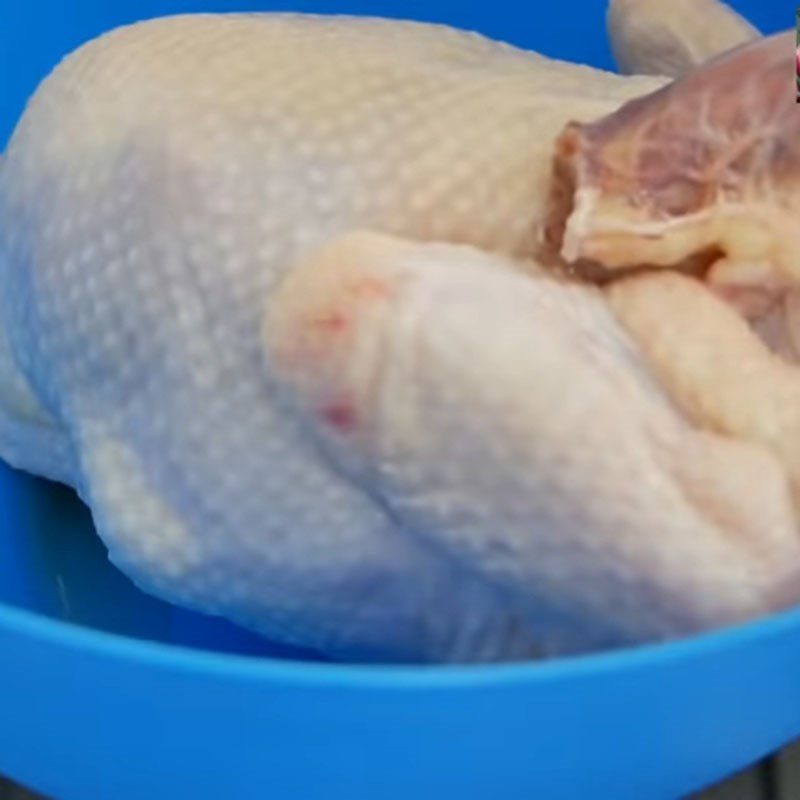
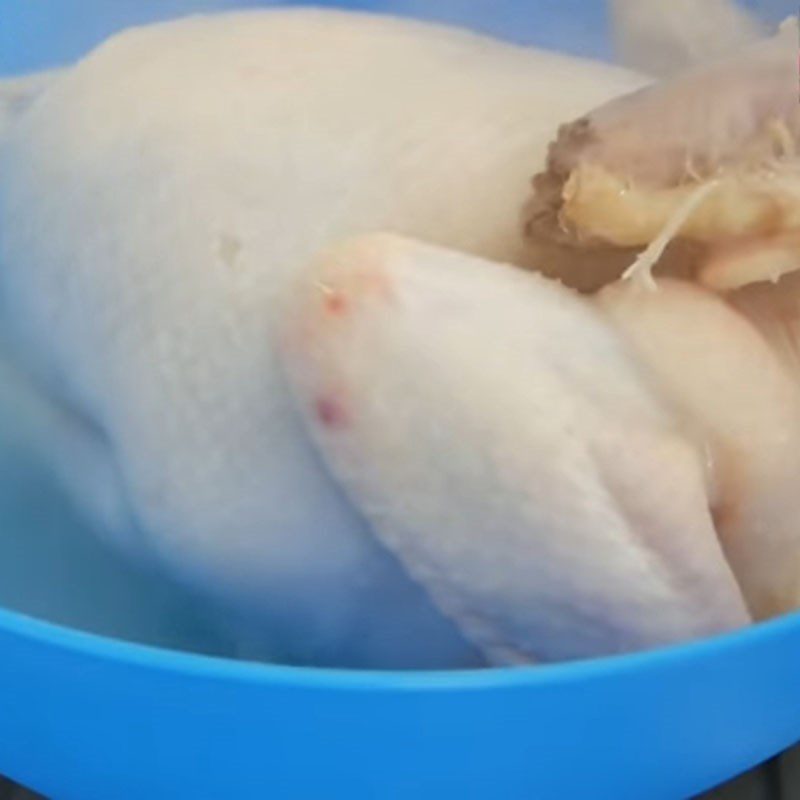
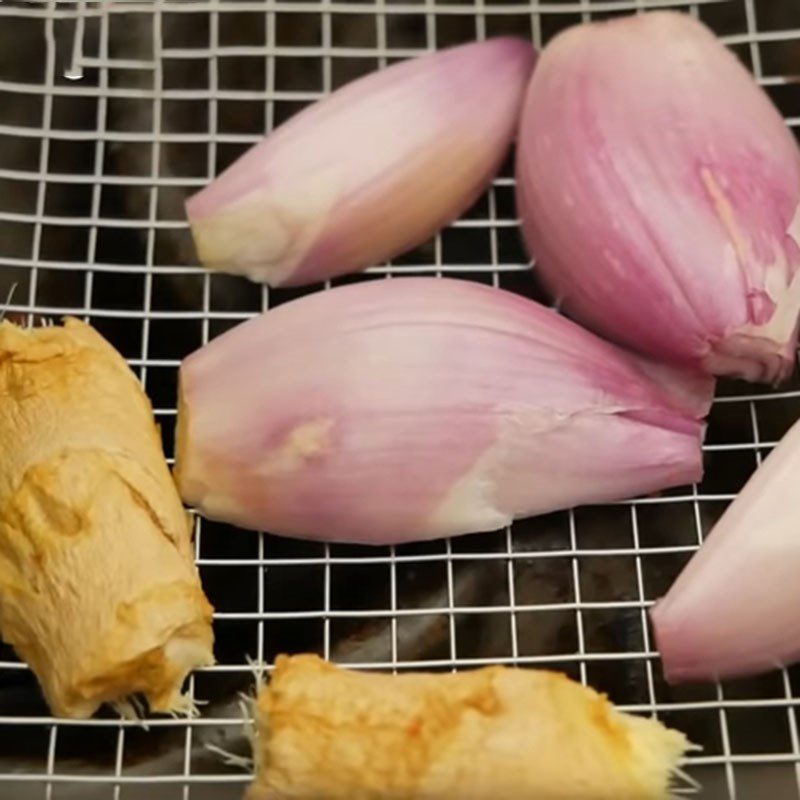
-
Boiled Chicken
Add 3 liters of water to the pressure cooker, cook for about 15 minutes until the water boils, then add the cleaned chicken along with ginger, roasted shallots, 1 tablespoon of salt, 20g of rock sugar (about 1 tablespoon), and 1 teaspoon of monosodium glutamate. Close the lid, lock the valve, and boil on the “Soup/Broth” mode with “Normal” pressure for about 2 minutes.
[tip]Tip: When adding the chicken, you should pay attention to the water level in the pot; it should only reach 2/3 of the pot. If it is higher, scoop some out to avoid the risk of the pressure cooker exploding, which is unsafe.[/info]
After 2 minutes, when the pot displays “L0:50”, let the chicken sit in the pot for another 50 minutes before taking it out.
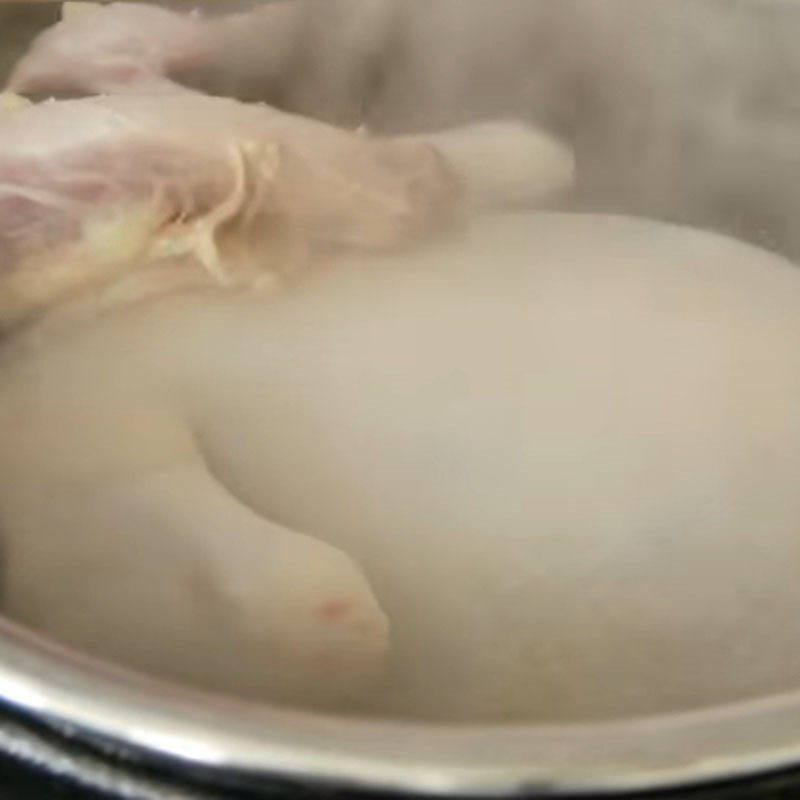
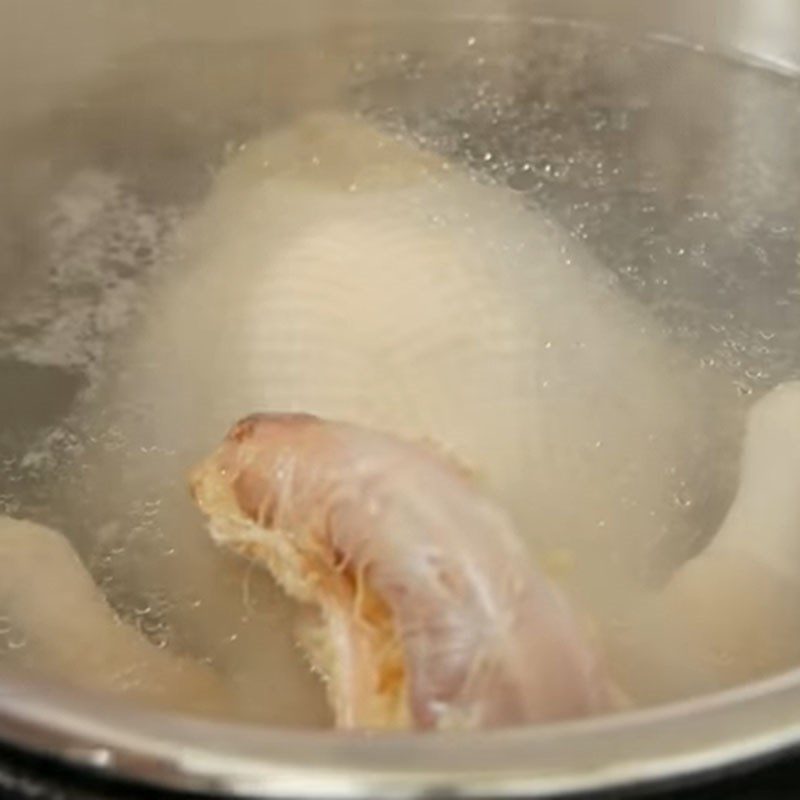
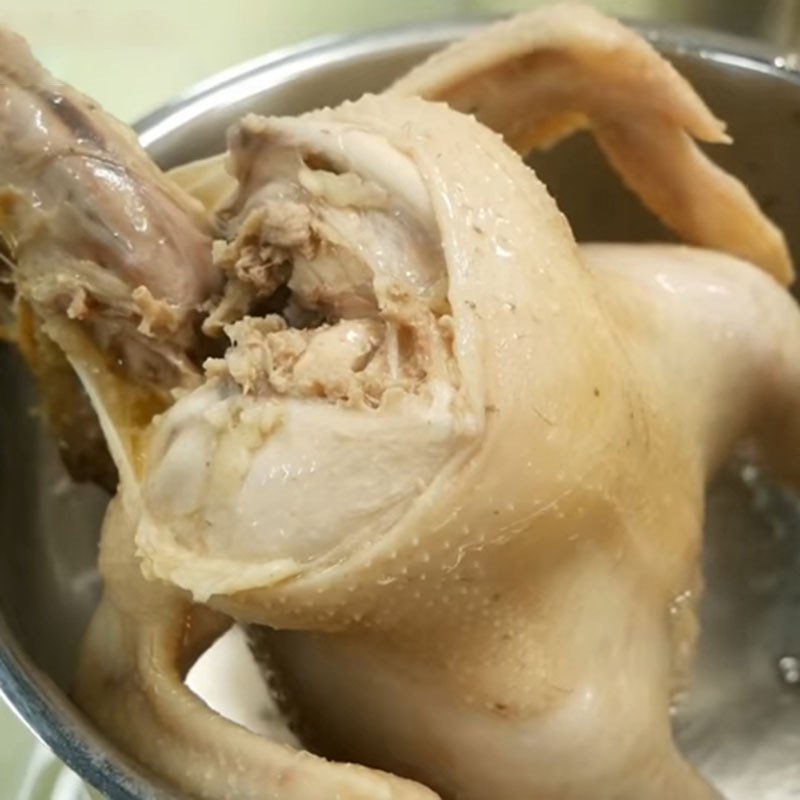
-
Prepare and Boil Chicken Offal
Soak the chicken heart in warm water, add 1 tablespoon of salt for about 2 – 3 minutes, then take it out, rinse with clean water, and cut the chicken heart in half.
Add 1 liter of water to the pot, bring it to a boil. Add 2/3 teaspoon of salt, 1/4 onion, and add the cleaned chicken hearts to cook until done.

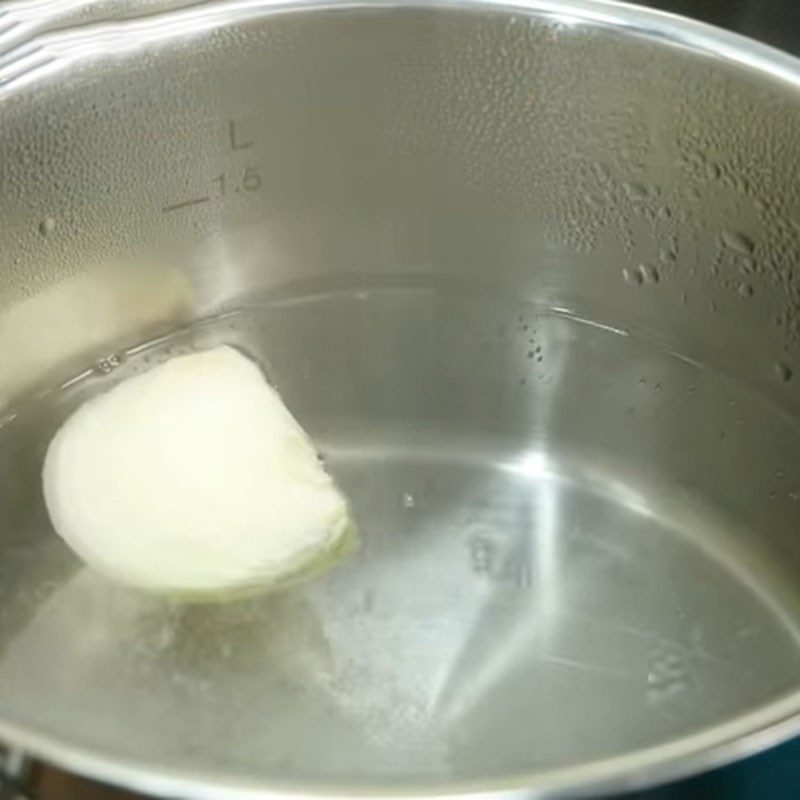
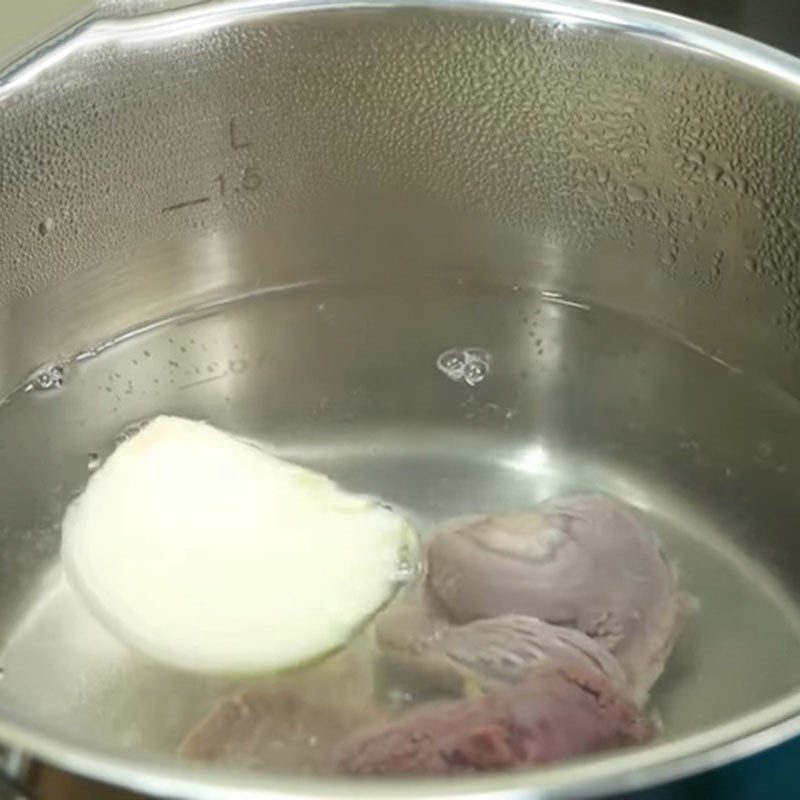

-
Dyeing chicken skin
Add 2 tablespoons of cooking oil to a pot (pan), heat on high until the oil is hot, then add 1 teaspoon of turmeric powder and turn off the heat immediately.
Use the turmeric oil to evenly coat the chicken skin while the chicken is still hot and let it sit for 10 – 15 minutes for the chicken skin to absorb the color of the turmeric. Then wash it thoroughly.
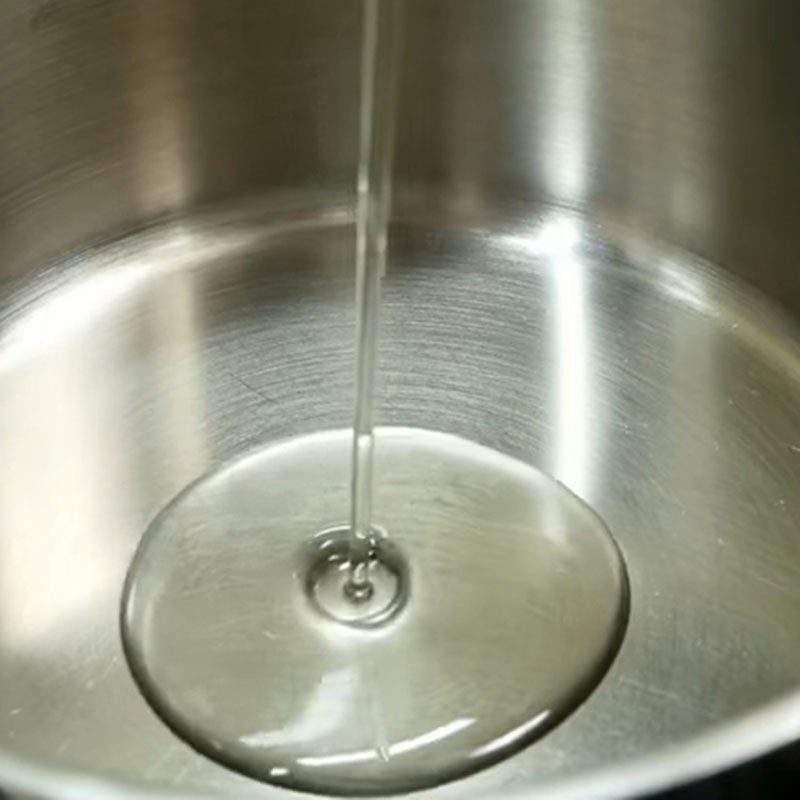
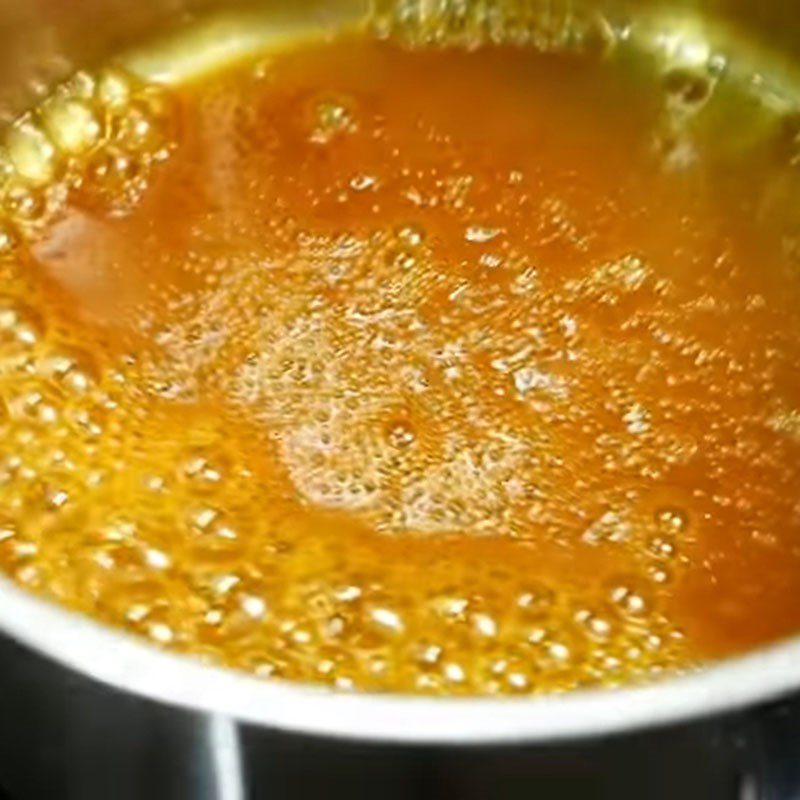

-
Cooking the broth
Wrap star anise, coriander seeds, and whole pepper in aluminum foil and roast at 180 degrees Celsius for 6 minutes, or you can roast them over medium heat until fragrant and golden.
Scoop out some of the fat from the chicken boiling water to reduce greasiness, strain to remove the residue of onion and ginger used when boiling the chicken.
Add 1.5 liters of broth (bone broth) and chicken boiling water to the pot. To enhance the flavor of the broth, place the roasted star anise, pepper, and coriander seeds into a filter bag, add half a roasted onion, and thoroughly washed coriander roots.
Simmer on low heat for about 7 – 10 minutes, then remove the filter bag. During this time, you can scoop out excess fat from the broth and adjust the seasoning to taste. Wait for the water to boil vigorously for about 3 minutes, then turn off the heat.
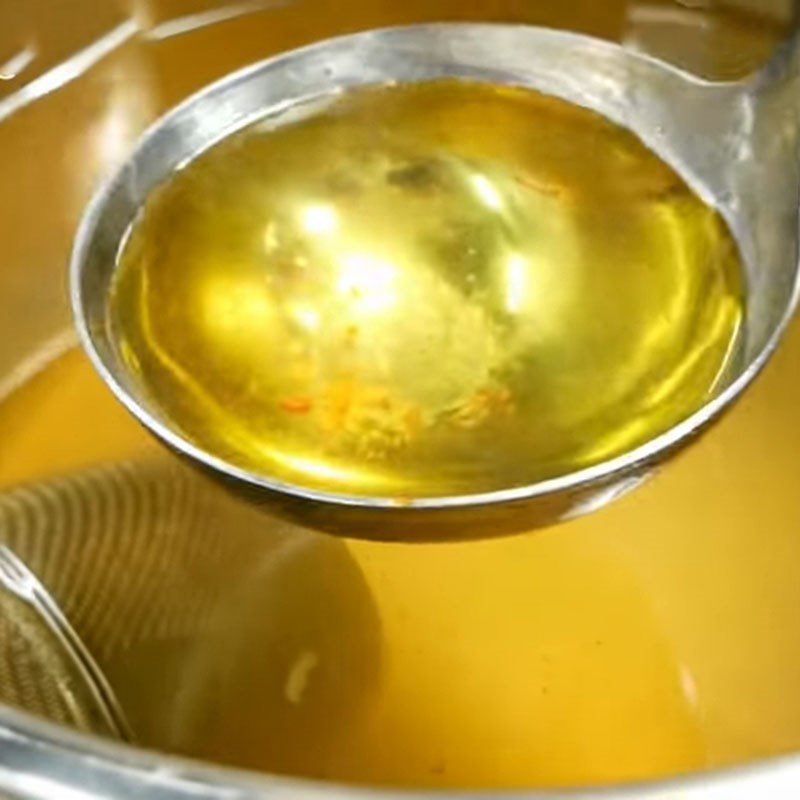
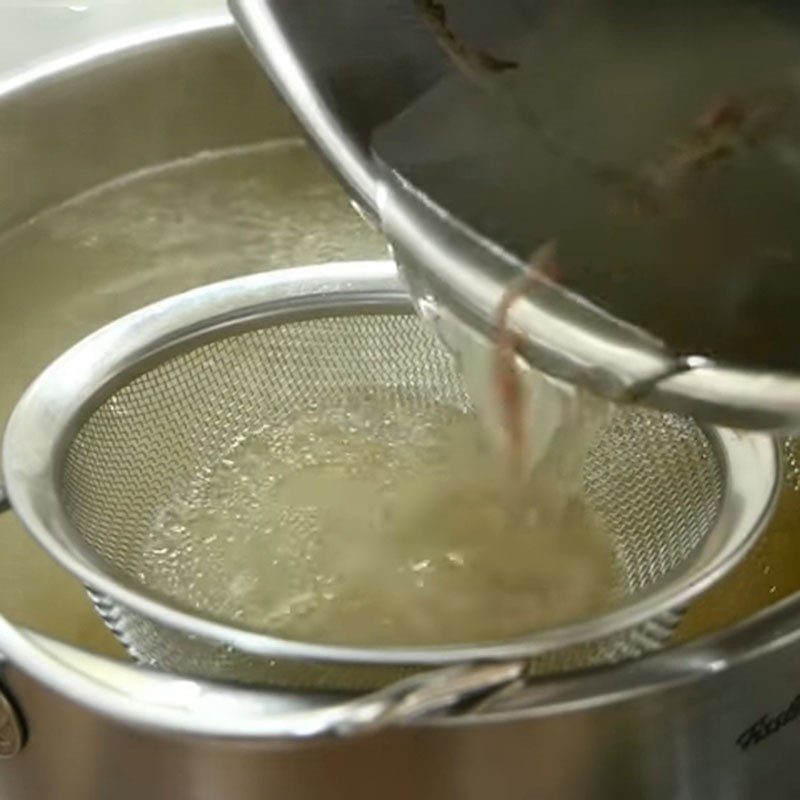
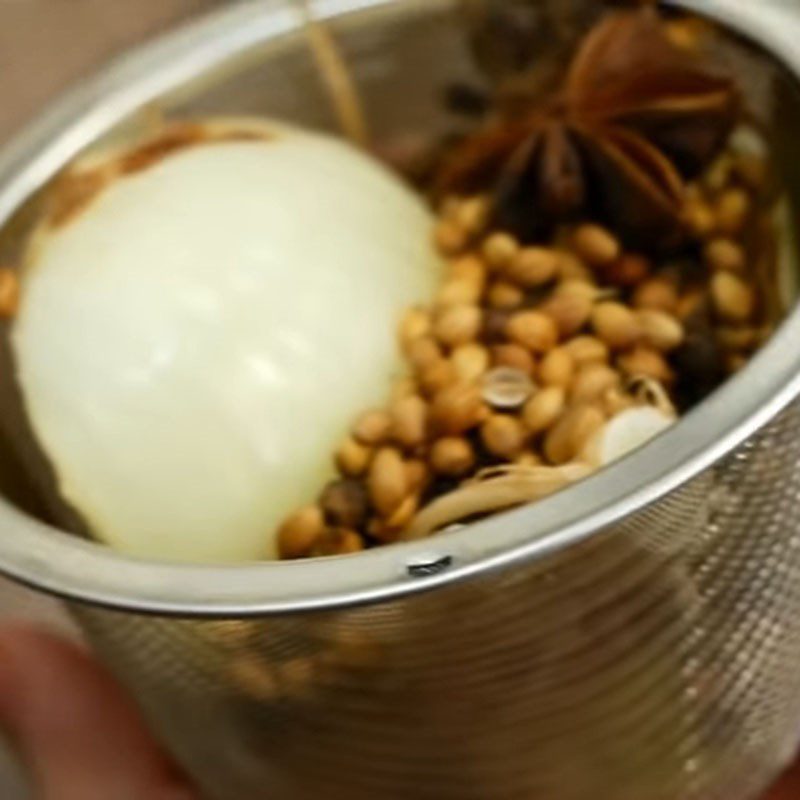
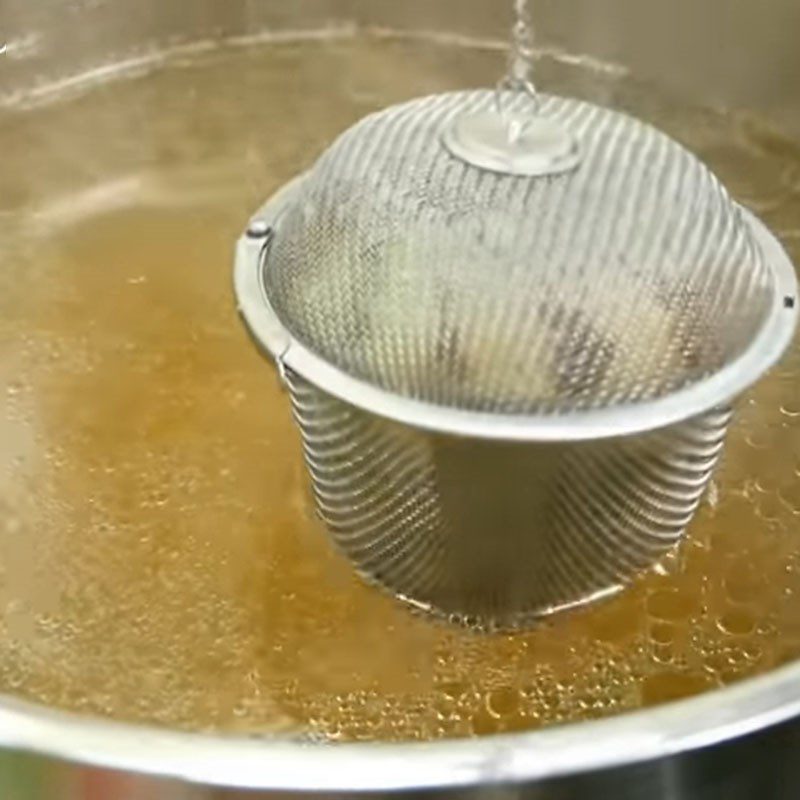
-
Completion
Cut the green onion into pieces, then briefly blanch with bean sprouts. The remaining green onion leaves, cilantro, and coriander should be finely chopped.
Cut the chicken into bite-sized pieces, prepare some fresh herbs to serve, chili, and lime.
Place the blanched bean sprouts in a bowl, fresh pho noodles, green onion tops, chicken, finely chopped green onion stems, onion if desired, and pour the broth over. Add a little ground pepper, and you have a delicious bowl of chicken pho ready.
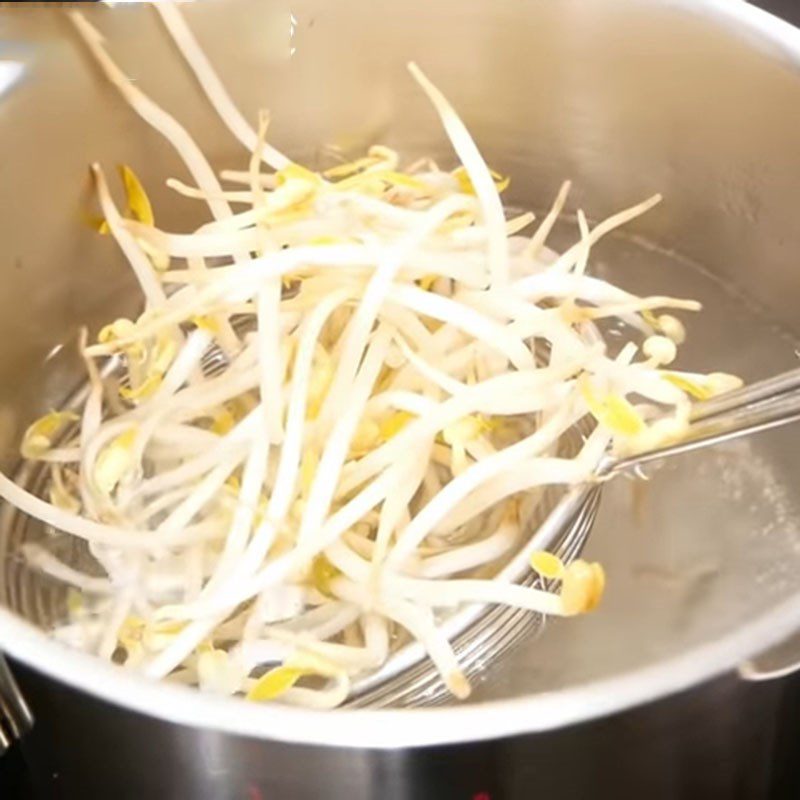
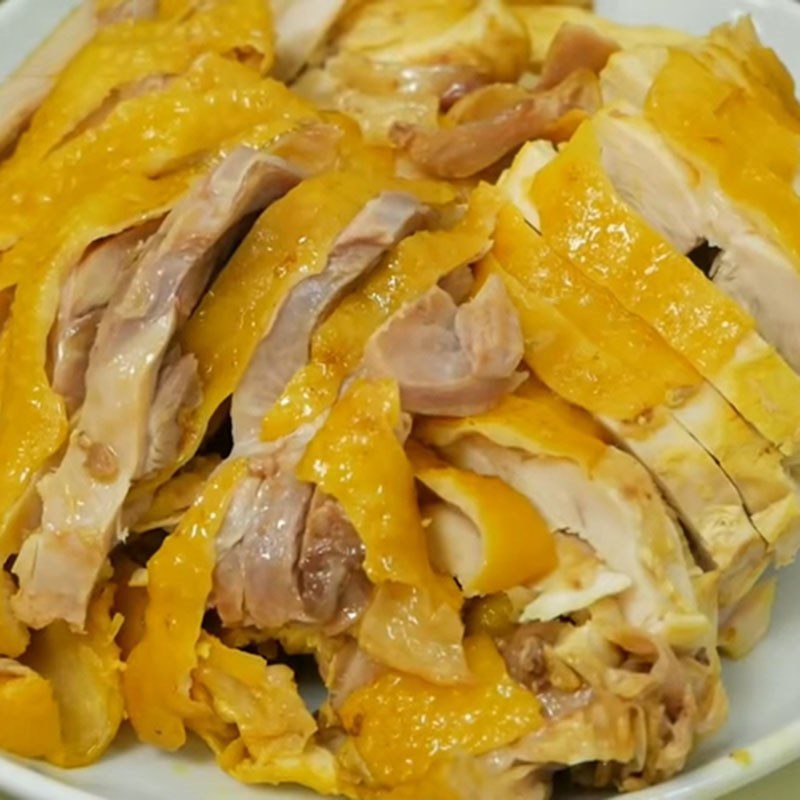
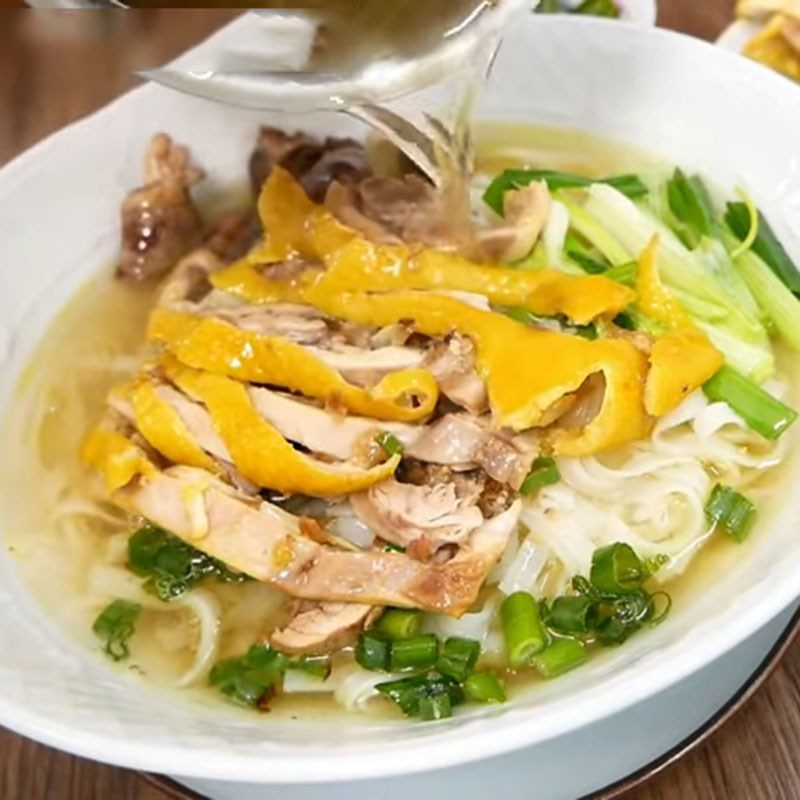
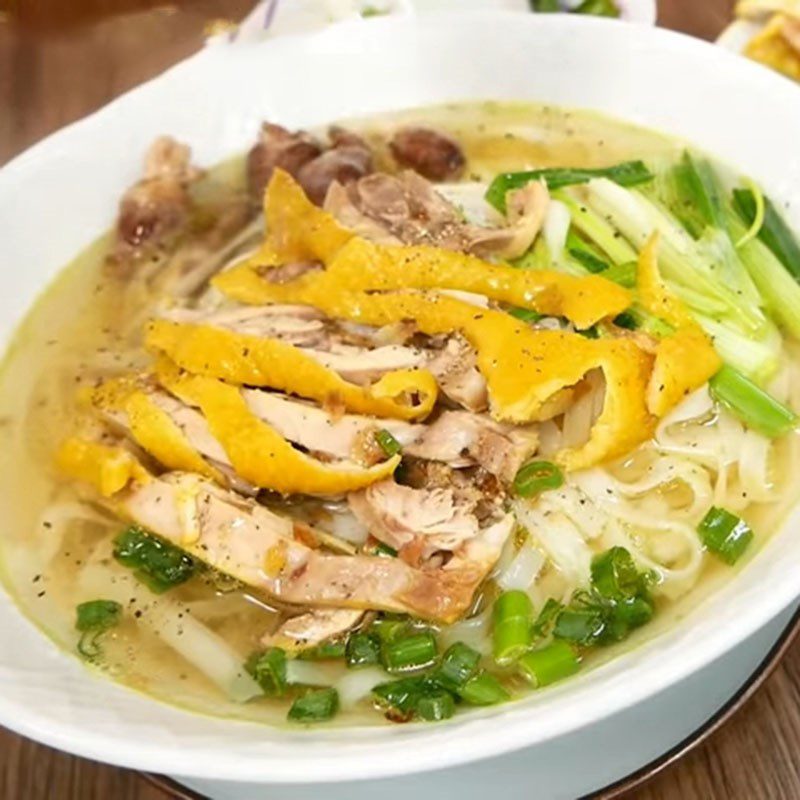
-
Finished Product
The bowl of hot chicken pho is ready for you to enjoy. The broth is clear, sweet from the bones and rock sugar, combined with fresh, tender, and sweet chicken meat, and crispy chicken skin that is incredibly enjoyable; you must try it right away.
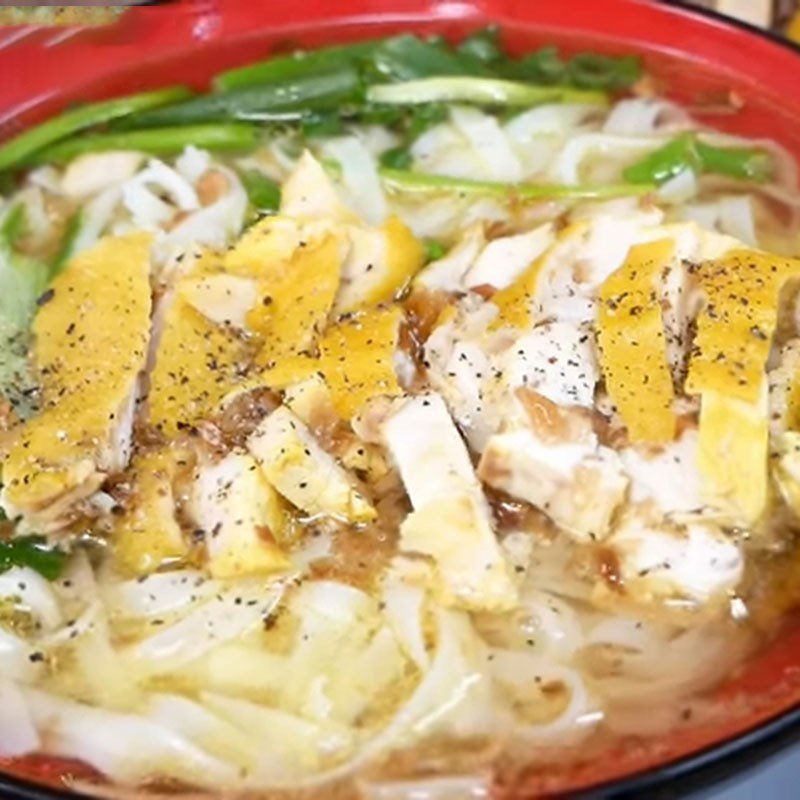
Above is a detailed guide on 2 ways to cook pho with a multi-functional electric pressure cooker quickly and correctly. TasteVN hopes that our shared secrets for delicious, simple, and super convenient cooking will help you save time in the kitchen while still enjoying delicious, quality meals. Wishing you success!
*Refer to images and recipes from the YouTube channel KT Food Stories and Vành Khuyên Lê
